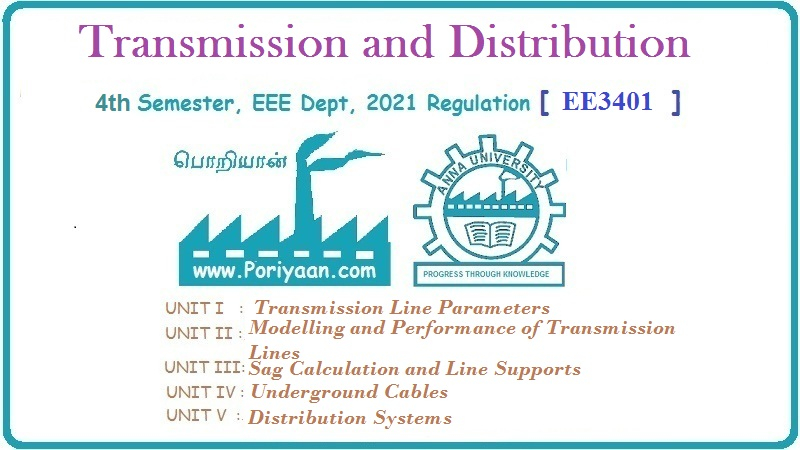Transmission and Distribution: Unit IV: Underground Cables
General Construction of a Cable
Underground Cables
Question : 1. Draw the cross sectional view of a single core cable and explain its construction.
General Construction of a
Cable
The Fig. 6.3.1 shows the general
construction of a cable. The cable shown is single conductor underground cable.
Its various parts are,

1. Conductor or core :
This section consists of single conductor or more than one conductor. The
conductors are also called cores. A cable with three conductors is called three
core cable. The conductors used are aluminium or annealed copper. The
conductors are stranded conductors in order to provide flexibility to the
cable.
2. Insulation :
Each conductor or core is covered by insulation of proper thickness. The
commonly used insulating materials are varnished cambric, vulcanized bitumen
and impregnated paper.
3. Metallic sheath :
The insulated conductors are covered by lead sheath or aluminium sheath. This
provides the mechanical protection but mainly restricts moisture and other
gases to reach to the insulation.
4. Bedding :
The metallic sheath is covered by another layer called bedding. The bedding
consists of paper tape compounded with a fibrous material like jute strands or
hessian tape. The purpose of bedding is to protect the metallic sheath from
corrosion and from mechanical injury resulting due to armouring.
5. Armouring :
This layer consists of the layers of galvanized steel wires which provide
protection to the cable from the mechanical injury.
6. Serving :
The last layer above the armouring is serving. It is a layer of fibrous
material like jute cloth which protects the armouring from the atmospheric
conditions.
Review Question
1. Draw the cross sectional view of a single core cable and explain its construction.
Transmission and Distribution: Unit IV: Underground Cables : Tag: : Underground Cables - General Construction of a Cable
Related Topics
Related Subjects
Transmission and Distribution
EE3401 TD 4th Semester EEE Dept | 2021 Regulation | 4th Semester EEE Dept 2021 Regulation
